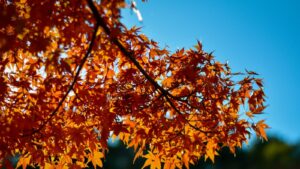Welcome, gardening enthusiasts! Are you ready to unlock the secrets of daffodil varieties? Spring’s iconic flower has a multitude of different faces, each with its own unique traits and attributes. Delve into the world of daffodils with us and discover the possibilities for your own garden. Let’s dive in, shall we?
What Are Daffodils?
Daffodils, also known as Narcissus, are a type of flowering plant. They are easily recognizable by their bright yellow or white flowers with a trumpet-shaped corona surrounded by six petals. These flowers are commonly found in gardens and are loved for their vibrant colors and delicate fragrance.
Daffodils bloom in the spring, symbolizing renewal and new beginnings. They are also easy to cultivate and are a popular choice for adding a pop of color to gardens and landscapes. Additionally, their long-lasting nature makes them a popular choice for floral arrangements and cut flowers.
What Are the Different Types of Daffodils?
Daffodils are a beloved symbol of spring, with their bright yellow petals and delicate fragrance. But did you know that there are actually many different types of daffodils? Each variety has its own unique characteristics and charm. In this section, we will explore the diverse faces of spring’s iconic flower by examining the 10 different types of daffodils. From the classic trumpet daffodil to the unique split-corona daffodil, we’ll discover the beauty and diversity of this popular flower.
1. Trumpet Daffodils
Trumpet daffodils are a beloved variety known for their iconic trumpet-shaped center and vibrant colors. To successfully grow and care for trumpet daffodils:
- Choose a sunny location with well-drained soil.
- Plant bulbs in the autumn, approximately 6 inches deep and 4-6 inches apart.
- Water thoroughly after planting, and then sparingly during the growing season.
- Apply a balanced fertilizer in early spring.
- Protect from pests, such as squirrels, by utilizing wire mesh or repellents.
- Remove spent flowers to encourage additional blooming.
- Allow foliage to naturally wither before removing.
For a stunning display, consider planting popular varieties like ‘King Alfred’ or ‘Dutch Master’. Experience the beauty of trumpet daffodils in your garden!
2. Large Cupped Daffodils
Large cupped daffodils, also known as 2. Large Cupped Daffodils, are a beloved type of daffodil known for their large, single cup in the center of the flower. Their timeless and sophisticated appearance makes them a top choice for both gardeners and flower enthusiasts. Some well-known varieties of large cupped daffodils include ‘Ice Follies’, ‘Carlton’, and ‘King Alfred’. These daffodils typically bloom in mid-spring and have a height of approximately 14 to 18 inches. They are low-maintenance and require similar care to other daffodil varieties.
Fun fact: Large cupped daffodils are often used in floral arrangements and can add a touch of elegance to any garden or indoor space.
3. Small Cupped Daffodils
Small cupped daffodils are a popular type of daffodil known for their elegant and delicate appearance. Here are the steps to grow and care for Small Cupped Daffodils:
- Choose a sunny location with well-draining soil.
- Plant the bulbs in the fall, about 6 inches deep and 4-6 inches apart.
- Water the bulbs after planting and keep the soil evenly moist during the growing season.
- Apply a balanced fertilizer in early spring to promote healthy growth.
- Remove spent flowers to prevent seed formation and promote flower production.
- Protect the bulbs from pests and diseases by keeping the garden clean and applying organic insecticides if necessary.
- In colder regions, mulch the bulbs in late fall to protect them from frost.
By following these steps, you can enjoy the beauty of Small Cupped Daffodils in your garden every spring.
4. Double Daffodils
Double daffodils are a stunning variety that adds a touch of elegance to any garden or floral arrangement. Here are the steps to successfully grow and care for double daffodils:
- Choose a sunny location with well-drained soil.
- Plant the bulbs in the fall, about 6-8 inches deep and 4-6 inches apart.
- Water the bulbs after planting and keep the soil moist but not waterlogged.
- Apply a balanced fertilizer in early spring to promote healthy growth.
- Keep the area around the bulbs free of weeds and mulch to retain moisture and suppress weed growth.
- Protect the bulbs from common pests like squirrels and rabbits by using wire mesh or repellents.
- Enjoy the beautiful blooms in the spring and consider cutting some for indoor arrangements.
Pro-tip: To encourage more blooms, deadhead the spent flowers and remove browning leaves to maintain a neat appearance.
5. Triandrus Daffodils
Triandrus daffodils are a unique variety known for their graceful and delicate blooms. Follow these steps when planting and caring for triandrus daffodils:
- Choose a suitable location with well-draining soil and partial shade.
- Plant bulbs in the fall, placing them 4-6 inches deep and 4-6 inches apart.
- Regularly water the bulbs, ensuring that the soil remains consistently moist but not waterlogged.
- Once a year in early spring, fertilize with a balanced bulb fertilizer.
- Protect the bulbs from pests and diseases by using organic pest control methods.
- Enjoy the stunning spring blooms, characterized by nodding flowers with multiple petals.
Triandrus daffodils are a popular choice for adding elegance to gardens, borders, and containers during the spring season.
6. Cyclamineus Daffodils
Cyclamineus daffodils are a charming variety known for their distinctive swept-back petals and trumpet-like cups. To cultivate these beautiful flowers, follow these steps:
- Choose a well-draining location with partial sun or light shade.
- Plant bulbs in the fall, around 4-6 inches deep and 6 inches apart.
- Water regularly during the growing season, keeping the soil moist but not waterlogged.
- Fertilize with a balanced fertilizer in early spring and after flowering.
- Protect from pests and diseases by removing dead foliage and using organic pest control methods.
Last spring, I planted Cyclamineus daffodils in my garden, and they added a vibrant burst of color. Their unique shape and sunny yellow hue brought joy to my mornings. Passersby couldn’t help but stop and admire their beauty. It was a delightful reminder that nature’s wonders can brighten even the simplest of spaces.
7. Jonquilla Daffodils
Jonquilla daffodils are a popular type of daffodil known for their sweet fragrance and delicate appearance. They are characterized by their small, star-shaped flowers and narrow leaves. If you want to grow and take care of jonquilla daffodils, simply follow these steps:
- Choose a sunny location with well-draining soil.
- Plant the jonquilla daffodil bulbs in the fall, about 4-6 inches deep and 4-6 inches apart.
- After planting, water the bulbs thoroughly and then maintain even moisture in the soil throughout the growing season.
- Apply a balanced fertilizer in early spring when the foliage starts to emerge.
- Protect the jonquilla daffodils from pests such as squirrels and rabbits by using fences or repellents.
- Remove faded flowers to prevent seed production and promote bulb growth.
- Allow the foliage to naturally die back before cutting it back.
By following these steps, you can enjoy the beauty and fragrance of jonquilla daffodils in your garden.
8. Tazetta Daffodils
Tazetta daffodils are a popular variety known for their clusters of small to medium-sized flowers and strong fragrance. Here are steps to grow and care for 8. Tazetta Daffodils:
- Choose a well-draining location with full sun or light shade.
- Prepare the soil by adding organic matter like compost.
- Plant the bulbs in the late summer or early fall, 4-6 inches deep and 4-6 inches apart.
- Water thoroughly after planting and keep the soil moist but not waterlogged.
- Apply a balanced fertilizer in early spring and after blooming.
- Remove faded flowers but leave the foliage intact to allow the bulbs to store energy for next year.
- Protect the bulbs from pests like squirrels by covering the planting area with wire mesh.
True story: A friend planted 8. Tazetta Daffodils in her garden, and every spring, their vibrant blooms and delightful scent filled the air, bringing joy to her and all who visited. The 8. Tazetta Daffodils became a symbol of hope and renewal, reminding her of the beauty that nature can bring.
9. Poeticus Daffodils
Poeticus Daffodils, also known as “pheasant’s eye” daffodils, are a charming variety known for their unique appearance and delightful fragrance. Their pure white petals and yellow cups edged in red add elegance to any garden or floral arrangement. Unlike other daffodil varieties, they bloom later in the season, typically in late spring. These daffodils have a rich history dating back to ancient Greek and Roman civilizations, where they were highly valued for their beauty and used in medicinal remedies.
10. Split-corona Daffodils
Split-corona daffodils are a unique type of daffodil characterized by their distinctive corona, which is divided into segments or “petals” that radiate outwards. These daffodils add a touch of whimsy and intrigue to gardens and floral arrangements. Here are some steps to grow and care for split-corona daffodils:
- Choose a sunny spot with well-draining soil.
- Plant the bulbs in the fall, around 4-6 inches deep and 4-6 inches apart.
- Water the bulbs after planting, and then regularly throughout the growing season, keeping the soil evenly moist.
- Apply a balanced fertilizer in early spring to promote healthy growth.
- Protect the plants from pests and diseases by practicing good garden hygiene.
- Deadhead spent flowers to encourage more blooms.
- Allow the foliage to die back naturally before removing it.
- Divide overcrowded clumps every few years to maintain vigor and promote flowering.
- Enjoy the unique beauty and charm of split-corona daffodils in your garden!
What Are the Characteristics of Each Type of Daffodil?
The characteristics of each type of daffodil can vary in terms of color, size, shape, and blooming time. Here is a table showcasing some popular daffodil varieties:
| Variety | Color | Size | Shape | Blooming Time |
|---|---|---|---|---|
| King Alfred | Yellow | Large | Trumpet | Early Spring |
| Tête-à-Tête | Yellow | Small | Multi-flowered | Early Spring |
| Ice Follies | White/Yellow | Large | Ruffled | Mid Spring |
| Jetfire | Orange/Yellow | Small | Cyclamineus | Early Spring |
| Pink Charm | Pink/White | Medium | Cupped | Late Spring |
These characteristics give each type of daffodil a unique appearance and make them suitable for different garden settings and preferences.
How to Grow and Care for Daffodils?
If you’re looking to add a burst of color to your spring garden, daffodils are a top choice. And with so many different varieties to choose from, it can be overwhelming to know how to properly grow and care for them. In this section, we will cover the basics of daffodil care by exploring the different aspects of planting, watering, fertilizing, and protecting these beautiful flowers. By the end, you’ll have all the information you need to successfully grow and maintain your own daffodil garden.
1. Planting Daffodil Bulbs
Planting daffodil bulbs is a simple process that can be summarized in a list. Here are the steps to follow:
- Choose a suitable planting location with well-drained soil and partial to full sunlight.
- Dig a hole that is two to three times deeper than the height of the bulb.
- Place the bulb in the hole with the pointed end facing upwards.
- Cover the bulb with soil, gently pressing it down to remove any air pockets.
- Water the newly planted bulb thoroughly to settle the soil and provide moisture.
- Add a layer of mulch around the planted bulb to retain moisture and prevent weed growth.
- Monitor the soil moisture and water as needed to keep it consistently damp but not waterlogged.
- Allow the foliage to naturally die back after blooming, as this will help store energy for the next year’s growth.
By following these steps, you can ensure successful planting and enjoy beautiful daffodil blooms in the spring.
2. Watering and Fertilizing Daffodils
Proper watering and fertilizing are essential for the growth and blooming of daffodils.
- Watering: Daffodils prefer well-drained soil, so make sure to water them when the soil is dry to the touch about 1-2 inches deep. It is important to avoid overwatering, as it can lead to root rot.
- Fertilizing: For optimal growth, apply a balanced slow-release fertilizer in early spring when the shoots emerge. Be sure to follow the package instructions for the correct amount and frequency. It is recommended to avoid using high-nitrogen fertilizers, as they can cause excessive foliage growth at the expense of flower production.
3. Protecting Daffodils from Pests and Diseases
Protecting daffodils from pests and diseases is crucial for maintaining their healthy growth and vibrant blooms. Follow these steps to safeguard your daffodil plants:
- Monitor: Regularly inspect your plants for any signs of pests or diseases.
- Remove infected parts: If you notice any damage or infection, promptly remove the affected leaves or flowers.
- Practice good hygiene: Keep your gardening tools and equipment clean to prevent the spread of diseases.
- Provide proper spacing: When planting daffodils, make sure to give them enough space to improve air circulation and reduce the risk of disease spread.
- Use organic pest control methods: Utilize natural remedies such as neem oil or insecticidal soap to control pests without harming the environment.
Daffodils have been cultivated for centuries and are believed to have originated in the Mediterranean region. They were highly valued by ancient civilizations for their beauty and symbolism. In the 17th century, daffodils gained popularity in Europe and were subsequently introduced to other parts of the world. Today, daffodils are cherished as a classic spring flower and continue to captivate gardeners and flower enthusiasts alike.
What Are the Symbolic Meanings of Different Daffodil Varieties?
Different daffodil varieties have symbolic meanings that can add depth and significance to their already beautiful appearance. Understanding these meanings can enhance your appreciation of these spring flowers. Here are some examples:
- “Actaea” symbolizes inspiration and creativity.
- “Thalia” represents grace and elegance.
- “Tête-à-Tête” signifies new beginnings and rebirth.
- “Jetfire” symbolizes energy and enthusiasm.
- “Ice Follies” represents purity and innocence.
- “February Gold” symbolizes hope and optimism.
By selecting specific daffodil varieties based on their symbolic meanings, you can add an extra layer of significance to your floral arrangements or garden displays.
How Have Daffodils Been Depicted in Art and Literature?
Daffodils have been a popular subject in art and literature for centuries, symbolizing rebirth, beauty, and hope. Here are some ways daffodils have been depicted:
- Paintings: Artists like Vincent van Gogh and Claude Monet captured the vibrant colors and delicate petals of daffodils in their famous paintings.
- Poems: William Wordsworth’s poem “Daffodils” is one of the most well-known literary works featuring daffodils, describing their beauty and the joy they bring.
- Literature: Daffodils have appeared in various novels and stories, often representing new beginnings or the arrival of spring.
Suggestions: Explore famous paintings and poems featuring daffodils, and discover the different interpretations artists and writers have given to these iconic flowers.
Frequently Asked Questions
1. What are the different types of daffodil varieties?
There are over 25,000 registered daffodil varieties, but they can be broken down into 13 main categories, including trumpet, large-cupped, small-cupped, double, triandrus, poeticus, jonquilla, tazetta, cyclamineus, juncifolius, bulbocodium, split-corona, and wild.
2. What is the difference between trumpet and large-cupped daffodils?
Trumpet daffodils have a long, central trumpet-shaped corona, while large-cupped daffodils have a shorter cup-like corona that is often a contrasting color to the petals. Both varieties have six petals, but the trumpet daffodil’s petals are evenly spaced, while the large-cupped daffodil’s petals are unevenly spaced.
3. How do double daffodils differ from other varieties?
Double daffodils have extra petals, giving them a fuller, more ruffled appearance. They can have either a single or double row of petals, and their corona can come in a variety of shapes and sizes.
4. Are there any rare or unusual daffodil varieties?
Yes, there are several rare and unusual daffodil varieties, such as the “Recurved Pheasant’s Eye,” which has a unique petal shape and vibrant colors, and the “Winged” daffodil, which has long, thin petals that resemble wings.
5. Can daffodils be grown in all types of climates?
Daffodils are hardy and can be grown in a variety of climates, but they tend to do best in areas with cold winters and cool springs. They also require a period of cold dormancy in order to bloom, so they may not thrive in warmer climates without proper care.
6. How long do daffodils typically last in a garden or vase?
Daffodil varieties can have varying lifespans, but on average, they bloom for about three to four weeks in a garden and seven to 10 days in a vase. Some varieties may have longer or shorter bloom times, so it’s important to research the specific variety you are interested in growing.


